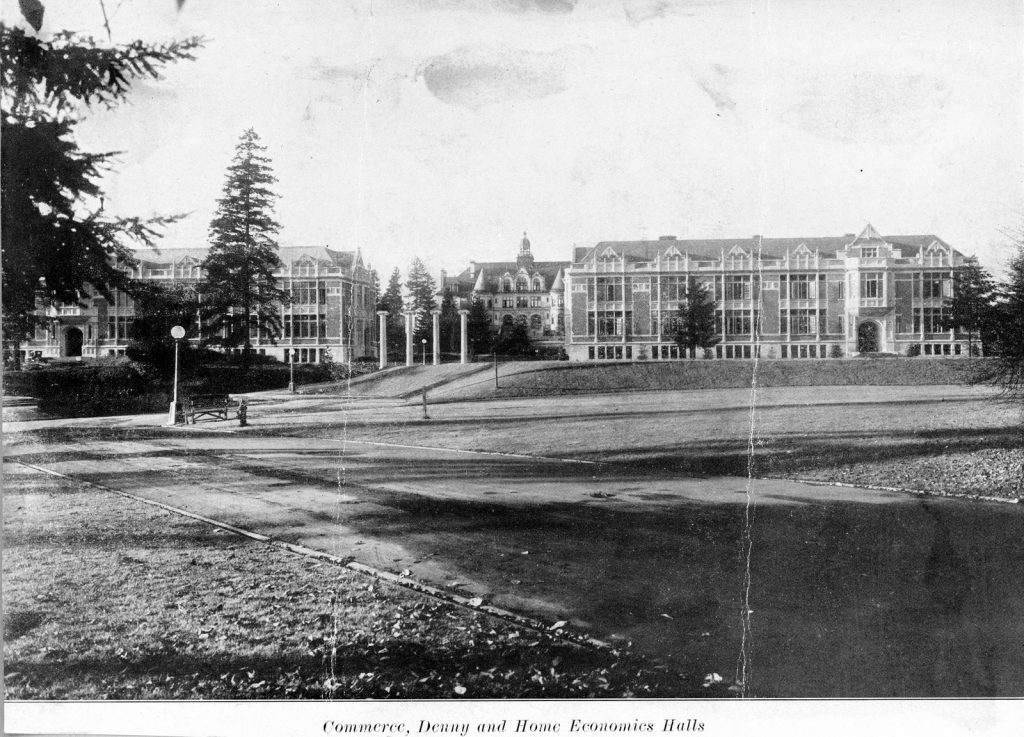Arc of Leadership & Innovation in Seattle: Seattle History

Archival photo of the University of Washington circa 1920
Something to think about…
This year we launched a 3 part series called the “Arc of Leadership & Innovation in Seattle”. This series is part of what we call the CLST (Center for Leadership and Strategic Thinking) L.A.B. or Leading Across Boundaries, that we do in partnership with the Foster MBA Association, and its VP this year Nick Smith. In the first of three planned events, we looked back in time to the beginning of Seattle as a region, to explore some of the challenges that its founders faced, and more importantly how those challenges were overcome. Why? We believe that the learning of history means gaining some thinking skills in sorting through diverse, often conflicting interpretations, which we could also label “strategic thinking”. Examining history provides us with a lab to examine how current innovation ecosystems like Seattle have evolved over time to become centers of innovation excellence.
We held this first 2016 L.A.B. event at the Museum of History and Industry in South Lake Union, where many historical artifacts regarding the challenges our MBA students heard about were housed. I facilitated this first session with Dr. Lorraine McConaghy, a public historian, who completed her Ph.D. in U.S. history in 1991 at UW. Lorraine has spent her career in museums, from the Smithsonian to Seattle’s Museum of History & Industry. Lorraine’s work has emphasized the importance of applied history –whereby we engage people to learn from the past to understand the present, and make better informed choices for the future.
Lorraine worked with our group to unpack challenges representing Seattle’s history of innovation, ranging from Mr. Henry Yesler trying to raise capital to start the first steam powered saw mill in 1853, through post WWI challenges to keep the Boeing Corporation from going out of business. For each historical challenge presented, our MBAs were given the same challenge facing folks like Mr. Yesler and Mr. Boeing and were asked in small groups to come up with their solution to these problems. Then Lorraine presented what actually was done.
For example, after WWI, Boeing had all of its military contracts cancelled, leaving them with no funds to build planes. What to do? Boeing had about 200 employees at what was called the Red Barn in Seattle, and with no contracts or funds, they would all be unemployed. What Boeing did was re-purpose the company to build the first air mail service AND Boeing furniture. Since planes back then were built out of wood, they could take their airplane craftsman and turn them into furniture makers. The furniture didn’t fly, but it was amazing work!
Time and time again, we learned how the former leaders in our community turned threats into opportunities to grow Seattle into an innovation hub. For example, when automating the process of preparing salmon for market, which created an oversupply of salmon, a great marketing plan was created to export this product around the country and then globe. When individuals could no longer be intubated for dialysis due to the collapsing of their veins, an ice cream machine was re-purposed to create a dialysis machine. These innovators also invented a Teflon shunt, that didn’t cause infections, so it never needed to be pulled out of the individual’s veins. From the collection of challenges that we covered, we could see the emergence of Seattle’s collaborative culture of innovation, and boundary ‘less’ thinking!
Next up…present day challenges, which we will be addressing at UW Co-Motions’ new facility for Virtual Reality in the U District. And by the time we are done this year, we will cover past thinking, present thinking and future thinking all wrapped up into Leading with Strategic Thinking!
This blog post was written by Bruce Avolio, a professor of management, the Mark Pigott Chair in Business Strategic Leadership, and the Director of the Center for Leadership and Strategic Thinking.
